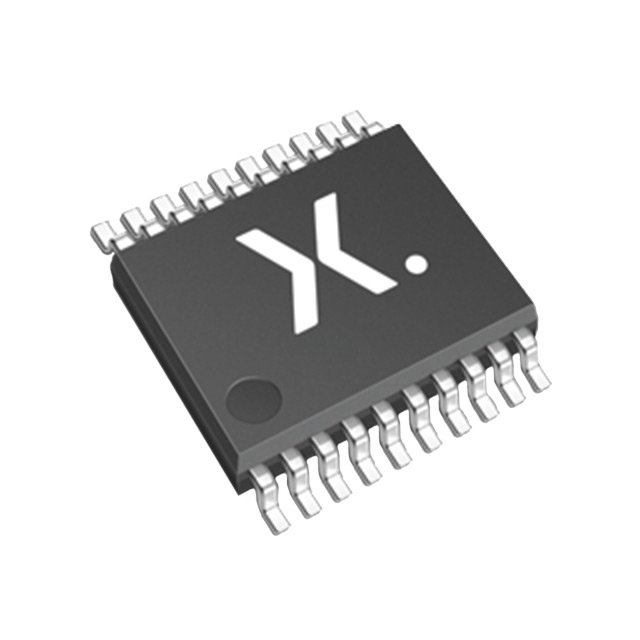Lihat spesifikasi untuk detail produk.

74LV245APWJ
Basic Information Overview
- Category: Integrated Circuit (IC)
- Use: Level Shifter and Bus Transceiver
- Characteristics: Octal bus transceiver with 3-state outputs, operates at a voltage range of 1.65V to 5.5V, and is compatible with both TTL and CMOS logic levels.
- Package: TSSOP (Thin Shrink Small Outline Package)
- Essence: The 74LV245APWJ is a versatile IC that facilitates bidirectional level shifting between different voltage domains in digital systems.
- Packaging/Quantity: Available in reels or tubes, with varying quantities depending on the supplier.
Specifications
- Supply Voltage Range: 1.65V to 5.5V
- Input Voltage Range: -0.5V to VCC + 0.5V
- Output Voltage Range: -0.5V to VCC + 0.5V
- Maximum Operating Frequency: 30 MHz
- Number of Channels: 8
- Output Drive Capability: ±24mA
- Propagation Delay: 6 ns (max) at 5V supply, 10 ns (max) at 3.3V supply
Detailed Pin Configuration
The 74LV245APWJ has a total of 20 pins, which are assigned specific functions as follows:
- Pin 1: OE (Output Enable) - Active Low Output Enable
- Pins 2 to 9: A1 to A8 - Data Input/Output for Port A
- Pins 10 to 17: B1 to B8 - Data Input/Output for Port B
- Pin 18: GND (Ground) - Ground Reference
- Pin 19: BDIR (Direction Control) - Controls the direction of data flow between Port A and Port B
- Pin 20: VCC (Supply Voltage) - Positive Supply Voltage
Functional Features
- Bidirectional Data Transfer: The 74LV245APWJ allows for bidirectional data transfer between two ports, A and B, with the direction controlled by the BDIR pin.
- 3-State Outputs: The IC provides 3-state outputs, allowing multiple devices to share a common bus without interfering with each other.
- Wide Voltage Compatibility: It supports voltage level shifting between different logic families, such as TTL and CMOS, making it suitable for interfacing various digital systems.
- High-Speed Operation: With a maximum operating frequency of 30 MHz, it can handle fast data transfers in time-critical applications.
Advantages and Disadvantages
Advantages: - Versatile level shifter and bus transceiver - Wide supply voltage range - Compatible with TTL and CMOS logic levels - 3-state outputs for bus sharing - High-speed operation
Disadvantages: - Limited number of channels (8) - Relatively small package size may require careful handling during assembly
Working Principles
The 74LV245APWJ operates based on the principles of level shifting and bidirectional data transfer. It uses internal circuitry to convert input signals from one voltage domain to another, allowing seamless communication between devices operating at different voltage levels. The direction of data flow is controlled by the BDIR pin, enabling data transmission from Port A to Port B or vice versa. The 3-state outputs ensure that the IC does not interfere with other devices connected to the shared bus when it is not actively transmitting data.
Detailed Application Field Plans
The 74LV245APWJ finds applications in various digital systems where level shifting and bidirectional data transfer are required. Some potential application fields include: - Microcontroller interfacing - Memory modules - Communication interfaces (UART, SPI, I2C) - Industrial automation systems - Automotive electronics
Detailed and Complete Alternative Models
- 74HC245: Similar functionality, but operates at a higher voltage range (2V to 6V) and is compatible with TTL logic levels.
- SN74LVC245A: Offers similar features, but operates at a lower voltage range (1.65V to 3.6V) and has a different pin configuration.
- CD74HCT245: Provides comparable functionality, but operates at a wider temperature range (-55°C to 125°C) suitable for harsh environments.
(Note: The above alternative models are just a few examples; there are several other alternatives available in the market.)
Word count: 552 words
Sebutkan 10 pertanyaan dan jawaban umum terkait penerapan 74LV245APWJ dalam solusi teknis
Sure! Here are 10 common questions and answers related to the application of 74LV245APWJ in technical solutions:
Question: What is the function of the 74LV245APWJ?
Answer: The 74LV245APWJ is an octal bus transceiver that can be used for bidirectional data transfer between two buses.Question: What is the voltage range supported by the 74LV245APWJ?
Answer: The 74LV245APWJ supports a voltage range of 1.65V to 5.5V.Question: Can the 74LV245APWJ be used with different logic families?
Answer: Yes, the 74LV245APWJ is compatible with both TTL and CMOS logic families.Question: How many input/output pins does the 74LV245APWJ have?
Answer: The 74LV245APWJ has 8 input/output pins.Question: Can the 74LV245APWJ handle high-speed data transfer?
Answer: Yes, the 74LV245APWJ is designed for high-speed operation and can support data rates up to 400 Mbps.Question: Does the 74LV245APWJ have any built-in protection features?
Answer: Yes, the 74LV245APWJ has built-in ESD protection on all inputs and outputs.Question: Can the 74LV245APWJ be used in both parallel and serial communication systems?
Answer: Yes, the 74LV245APWJ can be used in both parallel and serial communication systems, depending on the application requirements.Question: What is the power supply voltage required for the 74LV245APWJ?
Answer: The 74LV245APWJ requires a power supply voltage of 2.7V to 3.6V.Question: Can the 74LV245APWJ be used in automotive applications?
Answer: Yes, the 74LV245APWJ is AEC-Q100 qualified and can be used in automotive applications.Question: Are there any specific layout considerations for using the 74LV245APWJ?
Answer: Yes, it is recommended to follow the layout guidelines provided in the datasheet to ensure proper performance and minimize noise coupling.
Please note that these answers are general and may vary depending on the specific application and requirements. It is always recommended to refer to the datasheet and consult with an expert when designing technical solutions.

